By Heidi Dahms Foster
Summer is on its way, and this is a great time get outdoors with your dog. If you plan ahead and educate yourself on possible hazards, you’ll be on the way to a super, safe season. Here are some tips and common summer dangers to be aware of.
BEAT THE HEAT
Condition and breed can affect ability to deal with heat
Our pets can be affected by the heat in varying degrees depending on their age, conditions such as overweight or out of shape, or heart/respiratory issues. Certain breeds of dogs such as Pekingese, boxers, bulldogs, pugs and shih tzus and cats with short muzzles can have a much more difficult time breathing in heat and high humidity. Remember that some breeds are not suited to excessive activity.
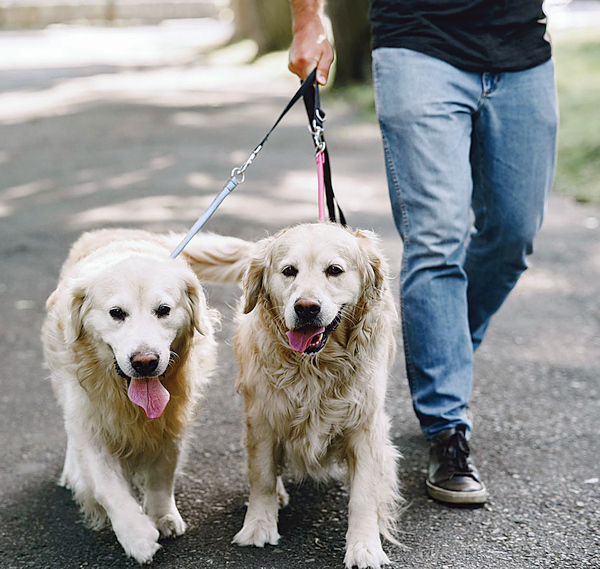
Hot pavement is a burn danger
Because we wear shoes and don’t think about walking on hot surfaces, we might forget that our dogs can severely burn their paws on hot pavement. Be aware in summer where you walk! Hot surfaces can not only cause serious burns, but because the dogs are close to the ground, radiating heat can cause them to feel the temperatures much sooner than you do.
Plan ahead for traveling
If you’re planning a road trip with your pet, make sure his needs are on your list. First, contain your dog in the car. Every year, many dogs are lost for weeks and some never recovered after car accidents in which they escape from the vehicle. Contain your dog in the car with a sturdy crate with good air circulation, or a dog seat belt. Be sure to carry plenty of water for you and your pets, and a way to keep them cool if you are stranded on the road (shade cloths, cooling mats or battery-operated fans).
Make sure your dog is microchipped and wearing identification.
Additionally, place information with your own emergency information on what to do if you are injured and cannot care for your pet: instructions on who to call (add a couple of options in case one cannot be reached), needed care or medications, and veterinary information. Display this where it is easy to find in your vehicle in case of emergency.
Never, never leave your pet in a hot car!

The temperature in a car can rise alarmingly in a short time, and cracking a window is never enough! Even if you think you are just going to run into a store for a few minutes, think about what might happen if you are delayed in a long line, or someone stops to talk. Worse, if you have a medical emergency, no one knows that your pet is in the car. Better to leave them home. You should never let your pet ride in the back of a pickup. Even if they are properly restrained, pickup beds are heat magnets, which can raise your pet’s temperature and burn their feet.
Cool things down
Shade is always important. Our pets feel the heat in direct sun as much or more as we do. Fans can be used in your home and outside, but remember that dogs sweat through their feet, so you may need to spritz your dog with a spray bottle of water to help the cooling effect. Battery operated fans such as Ryobi™ are useful in outdoors activities such as camping or dog sports. Home Depot™ carries a fan that sits on top of a 5-gallon bucket and sprays a mist. Canopies, shade cloths, and cooling mats are all helpful to ease the heat.
Who doesn’t love ice cream? While that treat might not be the best choice for our pets, there are many recipes online for “pupsicles,” or other cool treats. (By the way, there’s a great ice cream recipe for your pets on page 8.)
Heatstroke is a killer
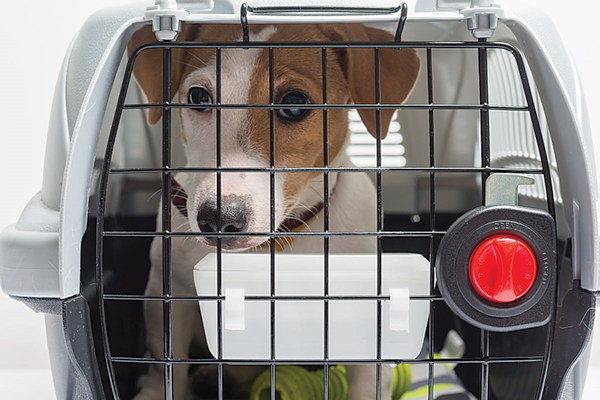
The American Kennel Club recommends that every pet owner recognize the signs of heatstroke. This can happen during exercise, extreme temperatures or lack of a place to get out of the sun and heat. Don’t hike or do strenuous activities with your dog in the heat of the day, as it doesn’t take long for your pet to overheat.
Signs of heatstroke include heavy panting, glazed eyes, a rapid heartbeat, difficulty breathing, excessive thirst, lethargy, fever, dizziness, lack of coordination, profuse salivation, vomiting, a deep red or purple tongue, seizure and unconsciousness.
If this happens, immediately move your pet into the shade or an air-conditioned area. Apply ice packs or cold towels to their head, neck and chest or run cool (not cold) water over them. Let them drink small amounts of cool water or lick ice cubes. Take them directly to a veterinarian.
WATCH OUT FOR WEATHER
Provide shade, fresh water and a cool space outdoors
Most dogs enjoy being outside to run and enjoy the yard, but they need protection from the elements. Not only can dogs get heatstroke from extreme heat and humidity, they can be harmed in weather extremes such as wind, heavy rain, or hail. Be sure to provide a solid, shaded shelter for outdoor use, or better, bring them in when you know the weather will be bad.
Summer storms can wreak havoc
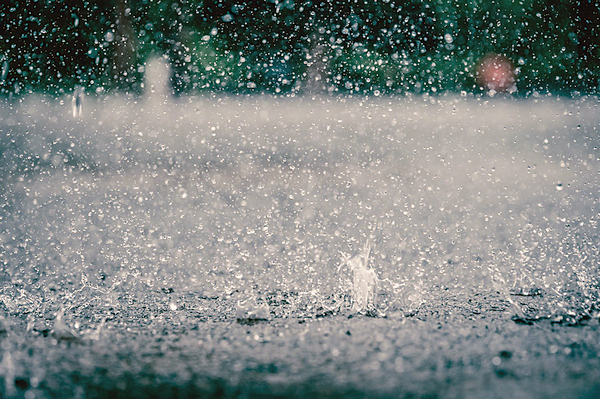
Many dogs are agitated and frightened during summer thunder and lightning storms. If they are outside, they can scale or push through a fence if they are afraid, and inside, they might hide, shiver, or display other signs of fear. Learn what triggers your dog.
If thunderstorms are a problem for your pet, speak with your veterinarian about possible calming medications or natural alternatives. Sometimes having a safe place such as a crate to hide in will help, and there are products available such as ThunderShirts™ and Happy Hoodies™ that help to calm pets.
FIREWORKS: WE LOVE ‘EM, DOGS HATE ‘EM
How to ease the terror for your dog

They happen on Independence Day, on New Year’s, and randomly in your neighborhood. It’s a fact that most dogs hate fireworks, but thankfully, you can make it easier on them. If your dog is crate trained, that may be his safe place. Some will hide under a bed or in a closet. Observe where your dog goes when he’s frightened, because that will give you a clue to what makes him a bit more comfortable.
Since so many dogs are frightened of fireworks, the market has some solutions that you can try. As in thunderstorms, ThunderShirts™ and Happy Hoodies™ may help. A Thundercap Calming Cap™ may help.
Pet MD online offers seven suggestions to ready your dog for fireworks.
- Use sound training with fireworks sound effects (available online).
- Try the many pressure wraps and caps (listed above).
- Have a pre-fireworks routine by hiking or otherwise exercising your dog prior. He’ll be ready to relax.
- Feed and potty your dog well in advance of the fireworks .
- Give him a chewy or other treat to focus on during the fireworks.
- Muffle the noise and light. Close up your home and play calming music or white noise.
- Comfort your dog with gentle reassurance.
- If nothing else helps, consult your vet, some even have natural alternatives to medications, such as melatonin and Zylkene™, a medication derived from milk proteins.
WARM WEATHER PESTS AND DISEASES
Vaccinations
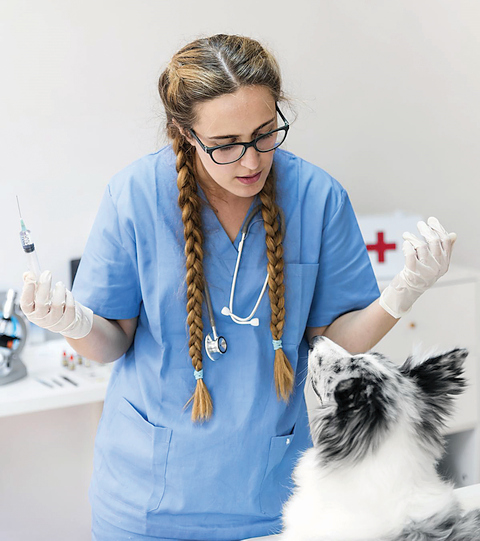
Many diseases, such as Distemper and Parvovirus, are more active in hotter weather. Be sure your dog is up to date on vaccinations. Don’t forget to check your dog’s Rabies vaccination. Because we’re more likely to be out and about in summer months, bites and encounters with wild animals can occur. You don’t want to deal with Rabies laws, which can cause your dog to be quarantined at your expense.
Insects and parasites
Depending on where you live, summer can be fraught with pests like ticks, fleas, and mosquitos. Don’t overdo it on the pesticides, though, which can be dangerous for your pet.
There are many natural shampoos and other pest deterrents, so it’s best to do your research and consult your vet. Keeping your environment free of standing water can help deter mosquitos, which can carry heartworm. Check with your vet on whether your dog should have heartworm medications, but be aware that some herding breeds are sensitive to heartworm medications with Ivermectin. Insist on a heartworm preventative without it.
LAWN AND GARDEN PRODUCTS CAN BE KILLERS
Keep dogs off fertilized lawns for 24 hours
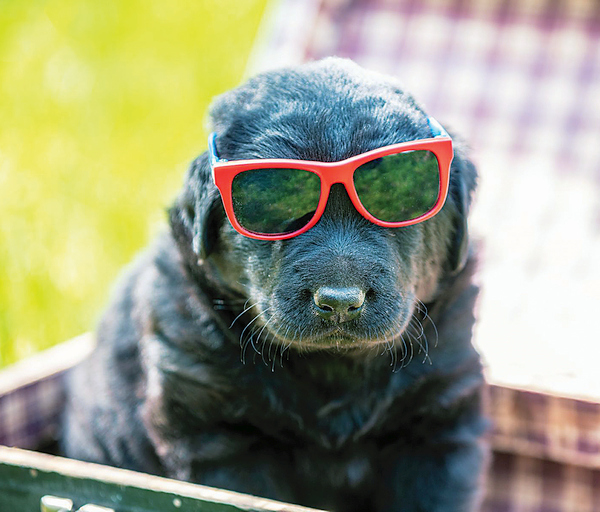
Many lawn and garden products such as insecticides, fertilizers and even some mulches can be extremely toxic to your dogs. We use these products often in the summer. It’s great to see your dog enjoy a green lawn, and they are prone to rolling in the grass, which brings them even more contact with dangerous chemicals.
Keep dogs off lawns that have been fertilized, for at least 24 hours. Many of the chemicals used in lawn treatments are toxic to pets. Pet Poison Hotline warns that while small ingestions of fertilizer may only result in mild stomach upset, larger ingestions can result in severe poisoning from the iron, nitrogen and other chemicals.
Beware of insecticides
If you’re a gardener, you’ll want to keep destructive pets off your flowers and vegetables. But be sure to not spray insecticides around your pet, or on plants your pet might ingest. There are many good pesticides that are not toxic to pets, just be sure to read the labels.
Mulch: the lesser-known killer
The smell and consistency of mulch is attractive to dogs. Mulch made from cocoa bean shells smells great, but it can contain theobromine and caffeine that can harm your dog. Some mulches contain mold. No mulch is completely safe for dogs, so if your dog is prone to munching on mulch, fence it off or keep your dog out of the area.
Toxic garden flowers and plants
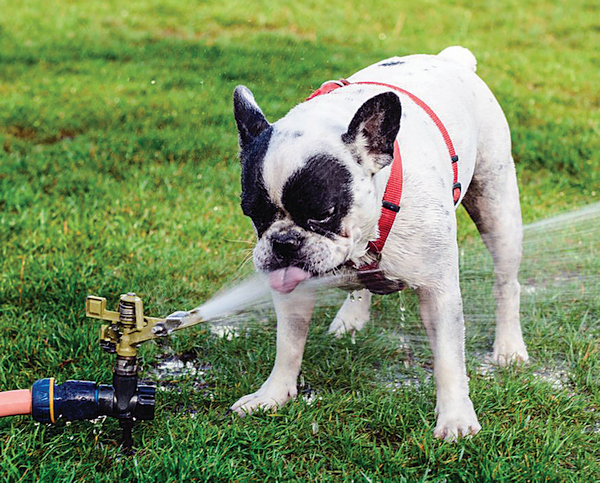
If your dog is prone to snacking on whatever he can dig up, beware of some of toxic garden plants and flowers. Some of the more common are Daffodil, Lilies, Azaleas, Sago Palm, Aloe, Begonia, Calla Lily, Chrysanthemum, Cosmos, Gardenia, Geranium, Iris, Hydrangea, Pansy, Poinsettia, and Primrose. This is not a full list, so if you have a garden muncher, do your research or fence off the plants.
SWIMMING IS SUPER, BUT CAN BE HAZARDOUS
Who doesn’t love to see a dog leap into the water and splash around or retrieve a stick or toy? It’s great fun, but you should be aware of a few things to keep your pet safe.
Don’t assume your pet can swim.

Some dogs with short muzzles can have a really difficult time breathing while swimming, and long bodied, short legged breeds can find it challenging to swim. If your dog is old, overweight, or ill, keep your swim times short and be ready to assist. Don’t ever let your dog swim unsupervised.
Life jackets are a good idea
If you take your pet kayaking, paddleboarding or boating, a properly fitting life jacket can save his life if he leaps into the water and you can’t quickly rescue him. Dogs can quickly become tired, especially in rougher waters. Remember that it doesn’t take much for your dog to quickly tire.
Know the swimming area
If you don’t know the waters where you let your dog swim, make sure you check out the possible hazards. Snakes can hide under rocks or holes in the ground, sharp rocks can cut your dogs’ feet, and your dog can become tangled in long water plants.
Blue-green algae can be life threatening, so it’s better not to let your pet swim in lakes when algae is blooming during warmer temperatures. A home wading pool is a safer bet.
Have a fun, healthy, safe summer with your pet!

